When it comes to treating animals, especially wildlife, healing doesn’t always begin with medicine. It begins with trust. At our four sloth bear rescue centres — Agra Bear Rescue Facility (ABRF), Bannerughatta Bear Rescue Centre (BBRC), Van Vihar Bear Rescue Facility (VVBRF) and West Bengal Bear Bear Rescue Centre, (WBBRC) a quiet but powerful change is underway. One that is redefining the way rescued sloth bears experience care, comfort, and connection.
Most of our rescued bears come with a long history of pain. Many were once victims of the cruel ‘dancing’ bear trade, enduring years of abuse and neglect. Others have been saved from the wild with grave injuries caused by illegal snare traps, leaving them with irreversible damage to their limbs or other body parts. When they arrive at our centres, their bodies bear the scars of the trauma they faced, and they carry the weight of fear in their hearts. Some have joint problems from years of unnatural postures; some live with partial blindness, broken teeth, or chronic infections. Every single one of them needs medical attention, not just during emergencies, but as part of their long-term care, so that any recurring illness or injury can be prevented or cured in time.
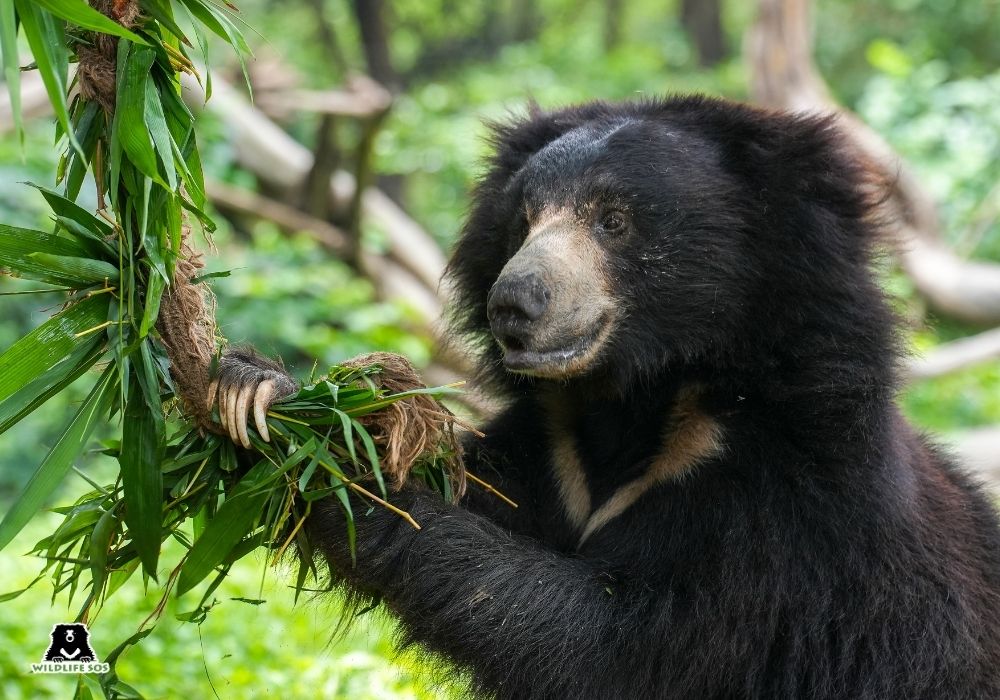
- At our rehabilitation centres, a bond of trust between a rescued sloth bear, the veterinarians and the caregivers forms the foundation of healing. [Photo © Wildlife SOS/ Kunal Malhotra]
The challenge is that sloth bears, like most wild animals, are masters at masking their pain, a survival instinct in the wild that makes early diagnosis difficult. A limp may be subtle, and a wound hidden beneath fur can go unnoticed. Without intervention, small problems can quickly become life-threatening. But for an animal suffering physically and having a traumatic past, any approach by a human can feel like a threat. Sedating them for every check-up is not only risky and stressful, but repeated tranquilisation can have long-term health consequences. We needed a way to keep them safe, healthy, and calm, without fear, force, or harm.
That’s where ‘operant conditioning’ comes in: a gentle, science-based approach rooted in patience and respect.
What Is Operant Conditioning?
Operant conditioning or target training uses rewards to encourage desired behavior from the concerned animal so that they can be safely examined and medically treated. Instead of forcing an animal into compliance, it builds a will in them to cooperate through trust. At Wildlife SOS, this is not a hurried process. Each bear learns at their own pace, guided by a consistent routine and a language of mutual understanding between caregiver and bear.
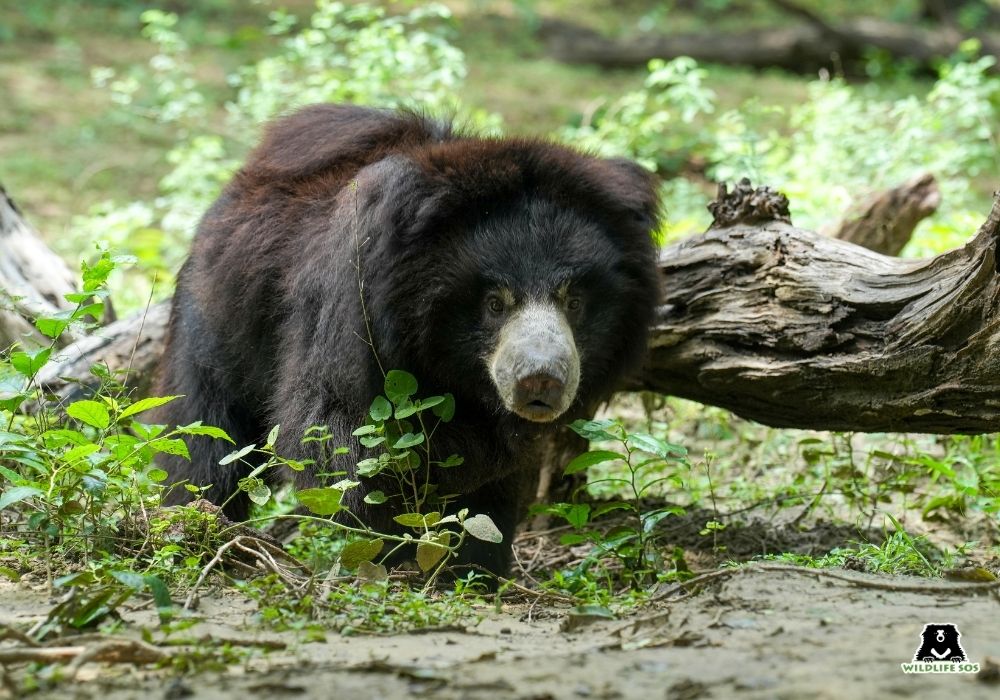
- With trust at the heart of their care, rescued sloth bears are slowly and sensitively led to operant conditioning, where they learn certain essential cues that benefit their healing journey. [Photo © Wildlife SOS/ Kunal Malhotra]
For rescued sloth bears requiring medical care, target training is conducted inside the bear dens. This usually takes place just before their meals, when the bears naturally come into their feeding dens from the larger enclosure outside. Sessions last around 10–15 minutes and end with the bear walking back into their open enclosure at their own pace. If a bear shows they’re not in the mood that day, we simply try again later; nothing is forced.
For newly rescued captive or wild bears, the process is even slower. First, caregivers offer treats from a safe distance, letting the bear learn that human presence doesn’t mean harm. Only when the bear approaches willingly do we introduce simple cues, like touching a target stick with their nose. Each success is met with a high-value reward that includes honey, dates, jaggery, or their favourite treat, until the bear begins to look forward to these gentle, predictable sessions.
Why This Training is Essential for Veterinary Care
Sloth bears are powerful, intelligent, and sometimes unpredictable. In traditional captive care, routine medical procedures often require sedation or restraint. But for our rescued bears that are fearful and already associate humans with pain, such interventions can reignite trauma. Through operant conditioning, we’ve developed a way for them to voluntarily participate in their own check-ups: offering a paw, opening their mouths, standing for examination, or lying still for an ultrasound.
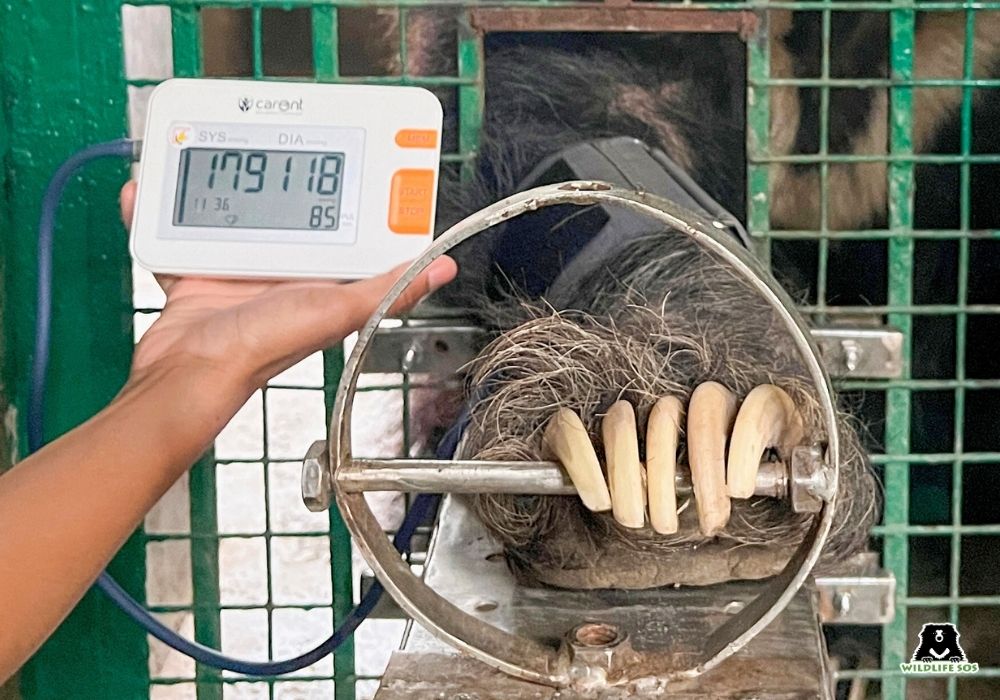
- Safe behind the protective barrier, this rescued sloth bear willingly offers her paw for a blood pressure analysis, a testament to the trust built through patient target training with positive reinforcements. [Photo © Wildlife SOS/ Srinu Srikanta Maharana]
Take Taj, for example, a sloth bear who likely had a strong aversion to physical contact. At first, she would retreat at any sign of a caregiver approaching. Using gradual approximation and food rewards, she learned that a gentle gesture meant safety, not harm. Over time, she accepted hand contact and allowed full medical examinations without a hint of stress.
Building Skills, One Behaviour at a Time
Clicker training lies at the heart of our programme. The click or sometimes a loud ‘YES’ from the caregiver marks the exact moment a bear responds to the desired cue, and is followed immediately by a reward. Over time, the bears learn that cooperation brings them delicious goodies, which is a part of positive reinforcement we always make sure to include.
The bears start their target training with basic behaviours:
- Target — Touch a harmless stick with their nose.
- Sit — Sit upright against the protective mesh, which is a strong, specially designed barrier separating the animal’s space from the caregiver’s area.
- Open — Open their mouth wide for dental inspection.
- Shoulder — Extend a shoulder through the port, which is a small, secure opening built into the protective barrier.
- Side — Stand with their body flush against the mesh.
From there, we gradually progress to medical-specific positions like perineal presentation for reproductive health checks, ‘lay’ for ultrasounds, or ‘up’ for visual examination of limbs and paws.
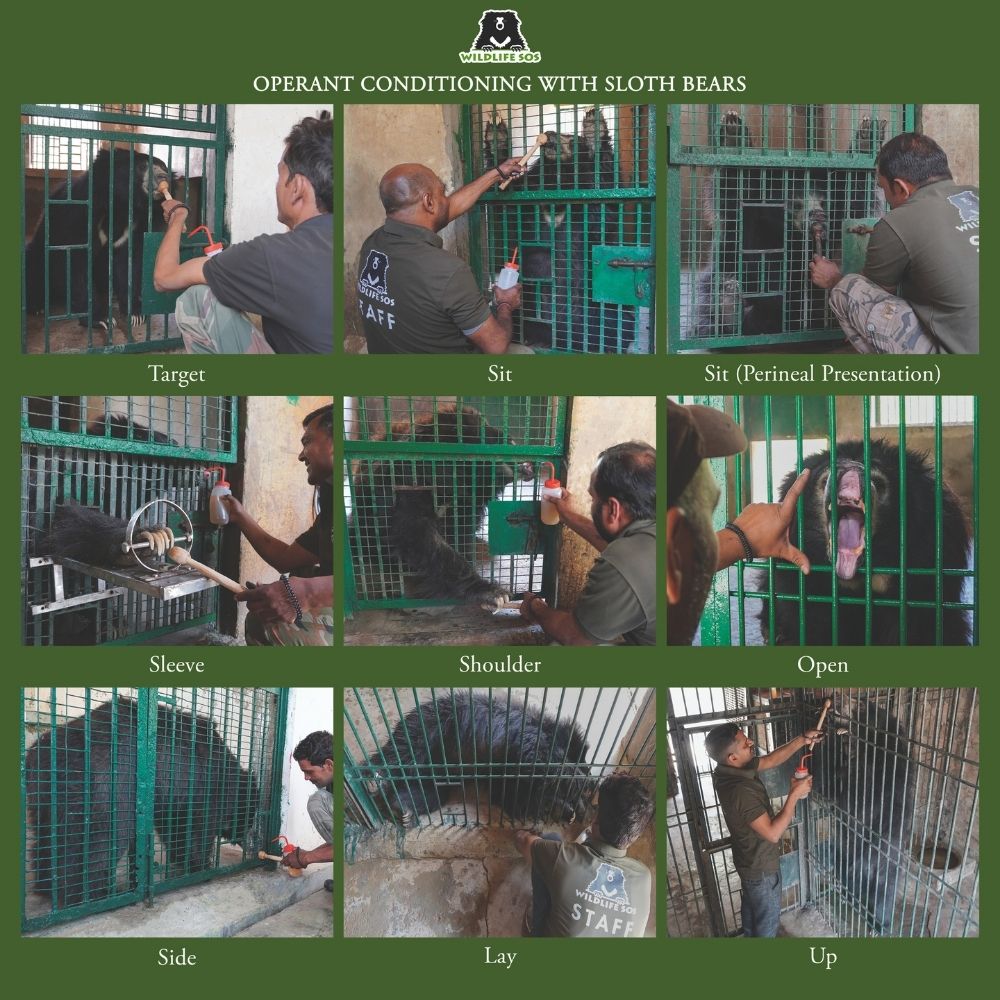
- The nine behaviours, practised safely through a barrier, help our rescued sloth bears participate in their health care without any injected sedative and with confidence. [Photo © Wildlife SOS/ Srinu Srikanta Maharana]
Neelkanth, a feisty bear known for his defensive and unpredictable reactions, initially posed a serious risk for our team to conduct any medical examination. Target training channelled his energy into these specific, safe behaviours. Over time, his aggression faded, replaced by a readiness to cooperate.
From Skills to Real Medical Procedures
Once a bear is comfortable and confident with the newly learned behaviours, we slowly introduce real medical tools such as syringes, thermometers, and ultrasound probes, using the same click-and-reward method. This desensitisation means that when the time comes for an actual procedure, these tools wouldn’t startle the bears, and they would simply accept it as a known part of their routine.
One day, Mubeen, a visually impaired bear, surprised us all. Initially wary of any unfamiliar sound or touch, her target training focused on using consistent auditory cues alongside gentle tactile guidance. The eventual result of this was seen when she positioned herself calmly for her first ultrasound, trusting the process completely.
A Lifelong Process
Operant conditioning is not a one-time achievement, but a continuous part of our daily care. Older bears tend to respond to prompts more slowly, like Chameli, a 34-year-old with reduced mobility and a quiet temperament, who takes her time to station herself near the barrier for her regular checks. Every session reinforces the trust we’ve steadily built, trust that allows for safe blood draws, ECGs, vaccinations, and temperature checks without fear.
Target training is a process that enables safe medical care, and if seen from a distressed bear’s point of view, it also honours them with a sense of dignity and empowerment. They’re no longer neglected or tortured patients, but active participants in their own well-being. For us, this reassures our medical experts and compassionate caregivers that they can monitor and treat the bears effectively, without ever compromising their safety.

- Abdominal ultrasonography is safely conducted on sloth bears needing effective examination of abdominal organs for diagnostic evaluation. [Photo © Wildlife SOS/ Srinu Srikanta Maharana]
Across all our three bear rescue facilities, operant conditioning programme isn’t just a success story, it’s a blueprint. It shows that even animals with traumatic pasts can overcome those episodes and learn to trust again. It proves that veterinary care doesn’t have to be invasive or fearful for the animal, but can be built on empathy, communication, and positive reinforcements. Not just sloth bears, but the rescued elephants under Wildlife SOS’s long-term care also receive target training by our expert staff so that required medical treatments are performed safely.
What began as a simple experiment in kindness has grown into a transformative method of animal care. Thanks to this innovative programme, rescued sloth bears at Wildlife SOS are no longer avoiding human contact. They are showing up, willingly, calmly, and confidently to participate in their own well-being. Their journey from hesitation to cooperation is not just a testament to their resilience, it validates the power of compassion as well. And that, above all else, is what healing should include.
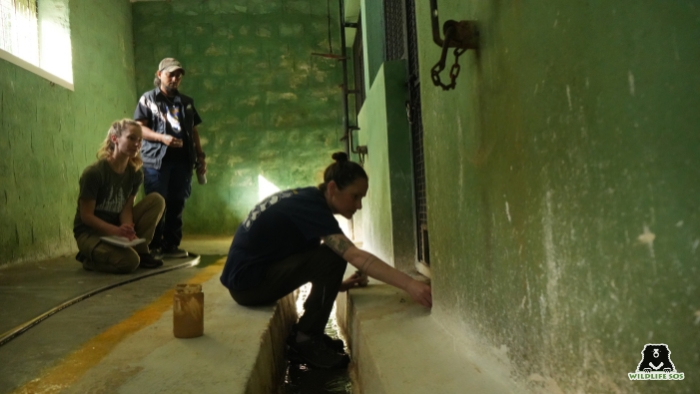
- The Bear SAFE team from the USA visited ABRF and BBRC to demonstrate new and safe techniques of target training. [Photo © Wildlife SOS/ Hemanta Chakma]
This commitment to trust-based care is not something we do in isolation. Wildlife SOS actively participates in knowledge-sharing with global experts, including our ongoing collaboration with the Bear SAFE (Saving Animals From Extinction) team from the United States, from where a group of volunteers have visited our centres for two consecutive years — first at the Agra Bear Rescue Facility (ABRF) and next at the Bannerughatta Bear Rescue Centre (BBRC). Through these exchanges, we not only share our own learnings from years of working with rescued sloth bears, but also adopt innovative techniques, from new cues tailored for geriatric bears to specialised training for visually impaired individuals. This cross-pollination of ideas keeps our methods dynamic and ever-evolving, ensuring that our operant conditioning programme continues to grow in depth, compassion, and effectiveness for every bear in our care.
You too can join our mission to continue providing medical care and sustain the welfare of sloth bears rescued from distress by making a donation to Wildlife SOS.
Feature image: Mradul Pathak/ Wildlife SOS






